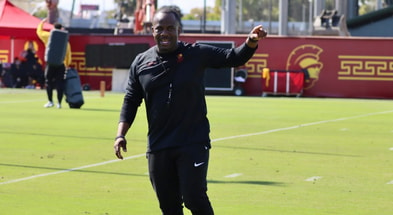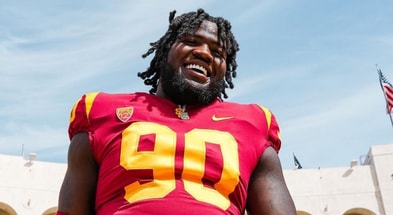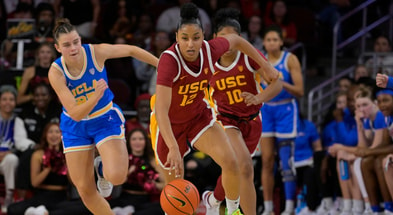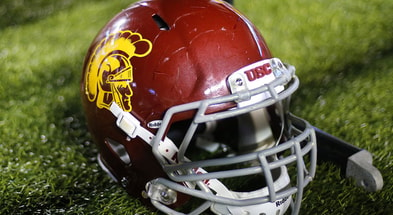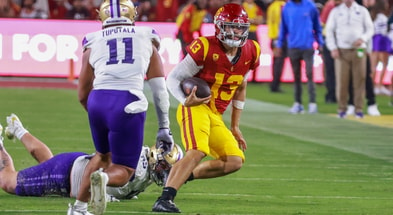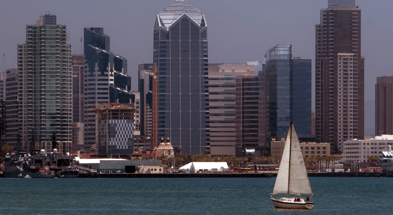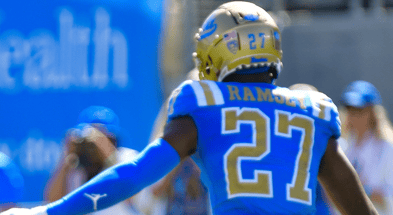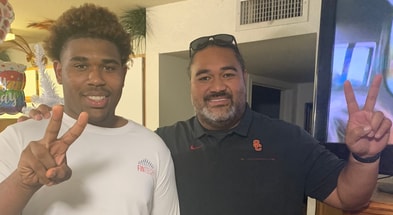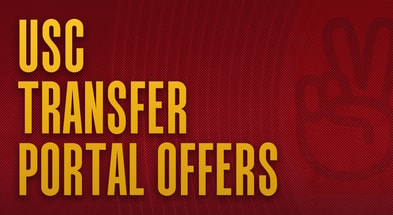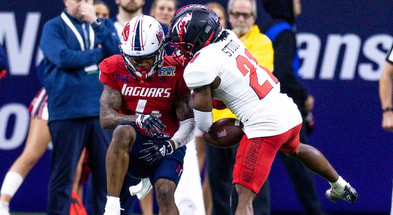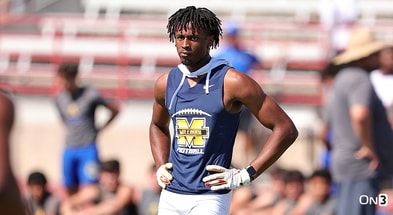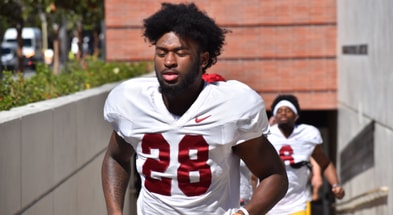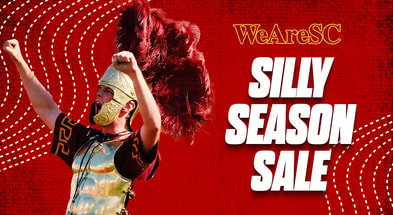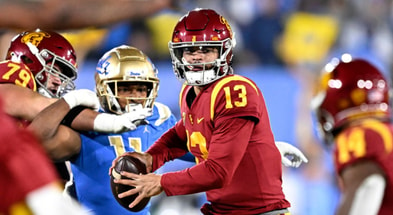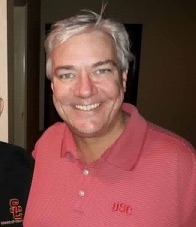How the week's big topics affect USC
This week brings updates on two separate fronts that may have a meaningful impact on the USC Athletics program. There was news regarding the increased likelihood of NIL (name, image, likeness) compensation for student-athletes and the announcement from USC of further cancellations of on-campus programs and activities, which lead to further questions about the fall season. Both issues will continue to play out and impact the USC community in the coming months and years. For now, here is how the Trojans are positioned to respond.
Planning for Fall
USC announced Tuesday that as part of its ongoing response to the coronavirus pandemic, it will continue remote learning for the second summer session, which runs from July 1 through August 11. With this announcement, USC included that all related in-person activities would also be conducted online. It’s unlikely that athletes specifically would be allowed on campus if the general student body was not. That means organized summer conditioning sessions and player run practices for the football team that would typically take place throughout the month of July, and the start of fall camp–players reported last year on July 29–are likely in immediate jeopardy.
USC has not stated its plans beyond the summer at this point, however, even as conversation about fall plans has picked up across the country. Oregon and Washington State are among several universities to recently announce that they plan to return to on-campus learning in the fall, though it should be noted that there is no guarantee to these schools’ “plans.”
As for USC, it said Tuesday that it is “deep into planning for a safe and appropriate return to campus of faculty, staff, research, graduate and professional, and undergraduate programs.”
The message from USC provost Charles F. Zukoski continued: “We will provide additional details on what we are calling “Project Restart” in the coming weeks and hope to announce our plans for the fall semester in the next two months, with the understanding that circumstances remain in flux.”
What is clear is that virtually everyone affiliated with every university that has a football program is doing everything in their power to go through with the 2020 season. But time continues to march forward and a realistic view is that a lot still needs to happen before fans are in the stands and sports return to normal this fall.
Arizona president Dr. Robert Robbins said last week in an interview with KVOI-AM in Tucson, Arizona, “I’m really concerned about whether we’re going to be playing football in the fall…My sense, right now, I just don’t see that happening.”
Pushing both the football and basketball seasons back into winter or spring, shortening the season down to conference games, or playing games without fans in the stands are three of several options that appear to be receiving attention as potential plans if a full season is unable to happen. Coaches from various programs–including Clay Helton–have said that they would need around four weeks of preparation to get up to speed for fall camp, though others have suggested potentially needing a bit less time.
There are a lot of mentions of “right now” and “at this point” from those discussing potential ramifications of the coronavirus pandemic on the fall athletic season simply because there are truly so many unknowns regarding something that is typically so structured and scheduled so far in advance. The one “known” at this point is that different states are going to ease social distancing measures at different rates and times. How that affects things moving forward in terms of practices being available to some programs and not to others will continue to be a point of discussion.
USC athletic director Mike Bohn earlier this month said communication between the Pac-12 athletic directors and conference leadership has been terrific throughout this situation.
“We’ve been working hand-in-hand on all the different issues, but clearly each institution has unique challenges,” Bohn said in early April. “That makes it a big challenge and I think everybody in the conference is respectful of each other and allowing everybody to understand that there are differences.”
But there is a clear thought of establishing a level playing field with practice time, once health experts determine when it is safe to begin practicing.
“I would anticipate those number of days will most likely include some kind of national initiative, ensuring that everybody is on the same page,” Bohn said earlier this month. “That’s why, watching the regionalization of different hot spots around the country, it’s adding complexity to that decision.”
Further complicating the process will be how states decide to reopen activities for their residents. On Tuesday, California governor Gavin Newsom laid out the state’s plan for re-opening. Currently, California is in Phase 1, which Newsom titled “Safety and Preparedness.”
It includes: “Staying home and flattening the curve. Building out our testing, PPE, and hospital capacity. Making our essential workplaces as safe as possible. And preparing sector-by-sector guidelines for a safe re-opening.”
Of interest to sports fans would be the fact that live audience sports resides in Phase 4, which will be re-opened “once therapeutics have been developed.” There is no established timetable for the phases, so at this point there would be no telling when exactly that phase would be reached, but Newsom said that later phases would be on the scale of months rather than weeks.
Name, Image, Likeness
Thanks to a significant push from California and at least two dozen other states who joined the cause, the NCAA’s top governing body said Wednesday that it accepted recommendations to update its current NIL rules.
While there are still a few hurdles to clear, this was a fairly strong statement that student-athletes will be able to generate income from their own business ventures as well as receive compensation for promotional activities.
This is something USC–under Bohn–will likely embrace.
“I think our student-athletes deserve more,” Bohn said earlier this month. “I was certainly thrilled when we implemented the cost of attendance distribution to our student-athletes and now we have to continue to find ways to be more supportive of their future. So what does that mean? If it’s name, image and likeness distributions, if it’s additional opportunities for us to support them through other initiatives, I’m all for that.”
If this continues through the legislative process and is adopted, it would take effect “no later than the start of the 2021-2022 academic year.”
There are a number of proposed guidelines that attempt to describe in detail what exactly is allowable as as genuine payment for use of their NIL and there are still plenty of details to work out, as laid out by The Sporting News:
- Whether alcohol, tobacco and sports gambling should be precluded.
- Whether athletics shoe and apparel companies should be excluded or have limited participation in newly permitted activities, “due to their history of encouraging or facilitating recruiting and other rules infractions.”
- What adjustments should be made to NCAA rules regarding NIL rights of athletes prior to enrollment at an NCAA institution.
- How best to implement safeguards that don’t impose “undue” burdens on student-athlete time.
- How to keep boosters from circumventing NCAA rules.
- Creating a framework to permit student-athletes to engage and consult with professional services providers in connection with their NIL and business activities.
- Creating resources on campus to educate student-athletes about the newly permitted activities and in a manner consistent with gender equity.
USC football players should do well with this, as Kedon Slovis and Drake Jackson are household names already with Trojan fans, but could become stars of Los Angeles if their projections hold. Cornerback Isaac Taylor-Stuart has built a huge following on social media–Twitter, Instagram and YouTube–and it wouldn’t take much for him to be able to capitalize on that following by promoting products or monetizing his accounts.
The Athletic posted a breakdown of what Taylor-Stuart could theoretically make with his accounts, using numbers from OpenDorse:
17,310 followers on Twitter: $900-1,800/year on Twitter
32,798 followers on Instagram: $4,000-6,000/year on Instagram
26,000 subscribers on YouTube: $1,000-2,000/year on YouTube
But while the focus will be on how much football players can earn under these new rules–and the top ones will be able to do very well simply as content creators or social media influencers–it should be noted that this opens up many opportunities for student-athletes in other sports as well. Now, a baseball player can be paid for working a batting clinic in the offseason or an Olympic athlete can accept endorsement money without giving up their eligibility.
“We’re in, in my opinion, the strongest sports city in the country in Los Angeles,” Bohn said in early April when asked about NIL before this announcement. “Obviously that bodes well for us. I have great faith in the NCAA leadership that they’ll manage that in a way that is equitable and fair and supports student-athletes more…I’m a student-athlete-centric AD and believe in doing everything we can to support our athletes.”
